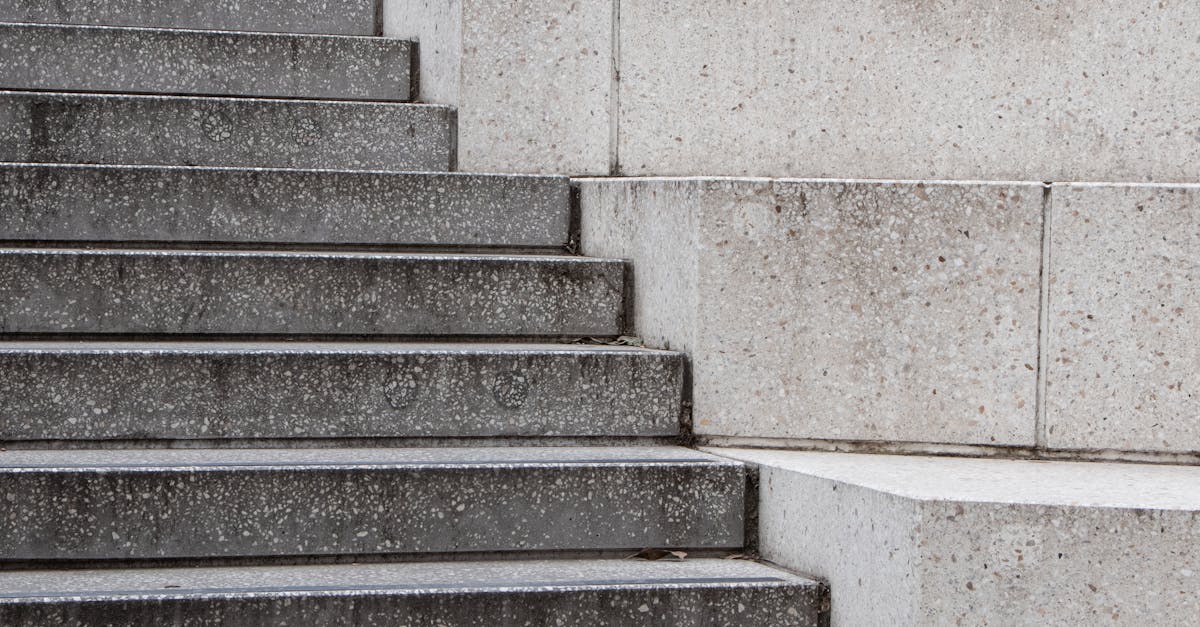
How to Properly Apply Sealant to Stone Wall Cladding
Application Techniques
Before beginning the sealant application, it's crucial to select the right product for your specific type of stone cladding. There are various sealants available, including penetrating sealers and topical coatings, each offering distinct benefits. Penetrating sealers work by soaking into the stone and providing protection from within, while topical coatings create a protective layer on the surface. Assessing the climate and the stone's porosity will aid in determining the best option for optimal performance.
Preparation of the stone surface is essential for effective sealant application. Begin by cleaning the cladding thoroughly to remove dirt, grease, and any previous sealants. A pressure washer can be effective for this purpose, but ensure the stone is completely dry before applying the sealant. Use a brush or a roller for application, ensuring even coverage and avoiding excess pooling, which can lead to an uneven finish. Applying at a temperature between 10 and 30 degrees Celsius will also facilitate better adhesion.
StepbyStep Guide to Applying Sealant
Before applying sealant to stone wall cladding, ensure that the surface is clean and free of dust or debris. Use a stiff brush or a pressure washer for significant cleaning if necessary. Allow the stone to dry completely, as moisture can hinder the sealant's effectiveness. Once the surface is prepped, gather your tools, which may include a paint roller, brush, or sprayer, depending on the area you plan to cover.
Begin by working in small sections to ensure even coverage. Apply the sealant generously but avoid over-saturation. Pay attention to the joints and seams, as these areas often require more product to ensure full protection. Once you have covered the entire area, allow the sealant to dry as per the manufacturer's instructions, checking for any missed spots before the final coat. This careful approach guarantees a uniform application that enhances the stone's appearance while providing lasting protection.
Curing and Drying Time
The curing and drying time of sealants can vary significantly based on the type of product used and environmental conditions. Most sealants will require several hours to dry to the touch, but achieving full curing may take up to a week. Factors such as humidity, temperature, and airflow can influence these times. It's crucial to follow the manufacturer's instructions regarding drying times to ensure optimal performance.
While waiting for the sealant to cure, avoid exposing the treated surface to water or heavy moisture to prevent complications. Once cured, the sealant forms a protective barrier that enhances the stone's durability and appearance. Regular inspection during the curing process can help identify any potential shortcomings, ensuring a successful application.
Recommended Drying Times for Different Sealants
Solvent-based sealants generally require more time, usually around 4 to 8 hours for a surface to become dry to the touch. Full curing can extend beyond 48 hours, significantly depending on environmental factors such as air circulation and temperature. It is crucial to consult the manufacturer’s guidelines for specific drying times to ensure optimal performance of the sealant.
Maintenance of Sealed Stone Cladding
Regular inspection of sealed stone cladding is essential for maintaining its aesthetic and protective qualities. Look for signs of wear, including discolouration, chips, or cracks that may indicate the sealant is degrading. Pay particular attention to areas that experience high foot traffic or harsh weather conditions. If any sections seem compromised, a touch-up application of sealant can help restore their protective barrier.
Cleaning the surfaces periodically contributes significantly to overall maintenance. Use a pH-neutral cleaner and a soft brush to remove dirt, grime, and organic matter without damaging the stone or the sealant. Avoid harsh chemicals or abrasive scrubbing tools, as these can wear down the sealant and the stone over time. Following these maintenance practices will help extend the life of the sealant and enhance the beauty of the stone.
Tips for Longlasting Protection
Regular maintenance plays a vital role in ensuring the longevity of sealed stone cladding. It is important to inspect the surface periodically for signs of wear or damage. Any cracks or chips in the stone can compromise the sealant’s effectiveness. Cleaning the surface with a mild detergent and soft brush helps remove dirt and prevent the accumulation of grime. Avoid using harsh chemicals that may degrade the sealant or the stone itself.Stone Wall Cladding
Reapplying sealant when necessary is crucial for maintaining the protective layer. The frequency of reapplication can depend on several factors, including the type of sealant used and the environmental conditions the wall is exposed to. Generally, a comprehensive check should be conducted at least once a year. This proactive approach not only enhances durability but also preserves the aesthetic appeal of the stone. Proper care ensures that the investment in stone wall cladding remains intact for years to come.
eally, sealant should be applied in dry conditions with temperatures within the range specified by the manufacturer.
Related Links
The Impact of Weather on Stone Wall Cladding SealantsBest Sealants for Stone Wall Cladding Applications
Environmental Factors Affecting Sealant Longevity on Stone Wall Cladding
DIY vs Professional Sealing Services for Stone Wall Cladding
Cost Considerations for Sealing Stone Wall Cladding
Signs Your Stone Wall Cladding Needs Resealing
Frequency of Sealing Stone Wall Cladding for Optimal Protection
Choosing Between Natural and Synthetic Sealants for Stone Wall Cladding
Autumn Maintenance Checklist for Stone Wall Cladding